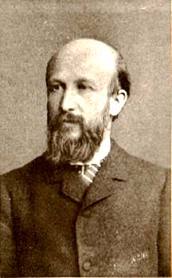Biology
Term: meiosis
- Chromosomal Aberration
Chromosomal aberration refers to a change in number of chromosomes, can occur on one, or several, or all of the chromosomes within a nucleus. This is cause by the failure of sister chromatids to separate during anaphase of mitosis or the failure of homologous...
- Mitosis Vs ...
Mitosis can be compared to a couple of different cell actions. But what makes it different?Mitosis is the process of which a cell divides and creates copies of itself, the main purpose of this being to help the organism grow or to replace cells that are...
- Meiosis
This produces sex cells i.e. sperm and eggs. The sex cells (gametes) have half the number (haploid) of chromosomes, so that when fertilisation occurs the fertised egg has the full compliment of chromosomes (diploid). Look at the following sequence, which...
- #32 Summary Of Cell And Nuclear Division
1. Growth of a multicellular organism is a result of parent cells dividing to produce genetically identical daughter cells. 2. During cell division the nucleus divides first, followed by division of the whole cell. 3. Division of a nucleus to produce...
- Anaphase
Term: anaphase Literally meaning: ?toward appearance?Origin: Anc Greek???-/ana-(=prefix denoting up to, toward, against) >???/ana(=up, on, upon before, first)?????/phasis(=stage) > ?????/phasko(=imperfect tense of verb ??????/phemi(=appear, show,...
Biology
meiosis
 |
| Oscar Hertwig (1849-1922) |
Origin: Anc Greek ?????/meion(=less) + -????/osis(=process) à lessening
Coined: by Oscar Hertwig, in 1876 who was the first to discover the process of meiosis inside the eggs of a sea urchin. The sea urchin is transparent due to its small size, finely divided yolk, and its lack of a membrane. Because of this, Hertwig was able to observe the spermatozoa as they entered the egg and fused with its nucleus five to ten minutes later. Most importantly, however, Hertwig found that only one spermatozoon was required to fertilize an egg, and that once one spermatozoon entered the egg, the egg formed a vitelline membrane blocking any other spermatozoa from entering. The significance of meiosis for reproduction and inheritance, however, was described only in 1890 by German biologist Ausust Weismann (1834-1914). However, it was in 1911 that Thomas Hunt Morgan, a geneticist, realized the crossover process in anaphase I. This was evidence that proved genes were actually on chromosomes. The term meiosis was coined finally by J.B Farmer and J.B Moore in 1905.
Definition:
The process of eukaryotic cell division that reducing the number of chromosomes from diploid to haploid. Meiosis is consisting of chromosome conjugation and two cell divisions, leading to gamete formation.
- Chromosomal Aberration
Chromosomal aberration refers to a change in number of chromosomes, can occur on one, or several, or all of the chromosomes within a nucleus. This is cause by the failure of sister chromatids to separate during anaphase of mitosis or the failure of homologous...
- Mitosis Vs ...
Mitosis can be compared to a couple of different cell actions. But what makes it different?Mitosis is the process of which a cell divides and creates copies of itself, the main purpose of this being to help the organism grow or to replace cells that are...
- Meiosis
This produces sex cells i.e. sperm and eggs. The sex cells (gametes) have half the number (haploid) of chromosomes, so that when fertilisation occurs the fertised egg has the full compliment of chromosomes (diploid). Look at the following sequence, which...
- #32 Summary Of Cell And Nuclear Division
1. Growth of a multicellular organism is a result of parent cells dividing to produce genetically identical daughter cells. 2. During cell division the nucleus divides first, followed by division of the whole cell. 3. Division of a nucleus to produce...
- Anaphase
Term: anaphase Literally meaning: ?toward appearance?Origin: Anc Greek???-/ana-(=prefix denoting up to, toward, against) >???/ana(=up, on, upon before, first)?????/phasis(=stage) > ?????/phasko(=imperfect tense of verb ??????/phemi(=appear, show,...
